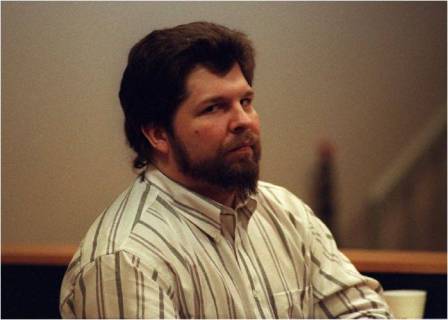Lisa Black: The Best True Crime Story I Never Wrote
I write fiction, with some (very) moderate degree of success, but my true ambition in life is to be the next Ann Rule. It is, however, very difficult to find exactly the right story. First of all the story has to be over, the killer caught (asking a reader to invest hours in a book when they’re still not going to know who did it at the end is a tough sell, to say the least) and convicted ( no nasty slander lawsuits against the author, please!). There has to enough story to sustain an entire book—if your neighbor kills his wife because he’s jealous of her affair with the mailman and is instantly caught, that will be a tragic, but short and sadly not unusual tale. If he plots for months, tries to hire three hit men in a row, and winds up training his retriever to pull the trigger with his paw, and/or the mailman is the long-lost son of European royalty, then you might have something. On my end, there has to be an investigation that I can get access to. I would need to find cooperative family members, cops, attorneys, anyone who actually participated in at least some part of the story. I need this to take place in a physically accessible location, so I can spend enough time there to cultivate them. Trying to cover a story in another state can eat up any tiny travel budget I may have, and I—naïve child—am writing a book to make money, not take out a second mortgage. On top of all that, it can’t be something that already has a pack of writers panting after it, like OJ or Casey Anthony or Scott Peterson.
For a while I thought I had one. A very unique story (good) of a bona fide serial killer (and we know how America loves those) and eminently accessible, as it took place only two hours from my home and my supervisor had been one of the investigating parties (score!).
Edwin Bernard Kaprat III (known as “Mike”, as it is significantly cooler than “Edwin”) spent the summer of 1993 terrorizing a small town called Spring Hill, Florida, just north of Tampa. He raped and murdered four women before setting their homes on fire in an attempt to hide the evidence. The victims’ ages ranged from 70 to 87 years of age. He had escaped conviction for killing a man two years earlier, sentenced only to house arrest for using the victim’s credit cards.
Edwin “Mike” Bernard Kaprat III
He started off at the beginning of August—not a pleasant time to be working crime scenes in Florida—with back to back killings of Sophia Garrity, 80, and Ruth Goldsmith, 70. Garrity’s was thought suspicious because a window was broken and a jewelry box disturbed, but no accelerants were found and the body had been too badly burnt to determine any physical injuries. Goldsmith’s mobile home showed no signs of foul play. It seemed coincidental to have two elderly women killed by arson so close together, but without any compelling reason to think otherwise their deaths were attributed to accidental electrical fires. Kaprat had used rubbing alcohol from the victims’ own bathrooms—alcohol does not have any petroleum and so is undetectable by machines and dogs. He’d leave a trail from the bed’s comforter to the front door, leaving the bathroom door open to get just enough oxygen to the fire to keep it going. It became a distinctive but not foolproof M.O.
On August 17 he attacked Alice and William Whitney, both in their 80s, but they were saved when a neighbor heard their smoke alarm. What seemed like an aggravated assault became more suspicious when cops noticed burn marks on the curtains. The victims lived only 4 houses away from my supervisor. They would stroll past his home twice every day to dine at a local restaurant, but never together—Alice would walk 50 feet ahead of her husband. Neighbors also never saw William outside, only Alice, so perhaps the attacker thought that Alice lived alone.
But when Ruth Goldsmith’s best friend Lydia Ridell was killed on September 2 and the police turned the victim over to see her hands bound by duct tape police, they knew beyond a doubt that they had a serial killer on their hands. The autopsy took 12 hours, several of them spent trying to freeze off the duct tape to check it for prints.
When the media did ‘man in the street’ interviews, Kaprat’s sister wound up on the newscast describing her fright at the awful murders, and how unsafe she now felt. She had no idea that the man responsible currently flopped on her couch.
But the last and oldest of these elderly victims gave Kaprat the toughest fight. At age 18 Lorraine Dawe had been among the first women allowed to compete at the Winter Olympics in Chamonix, France (skating against an 11-year-old Sonja Henie). Still strong even in her old age, she struggled valiantly. Kaprat did escape but this time when he closed one door the suction caused another to swing shut, largely extinguishing the fire and leaving investigators with enough evidence to convict. They found a fingerprint left in the soot and at almost the same time, an anonymous tip told police that Edwin Kaprat III had done handyman work at all the victims’ homes alongside his father, Edwin II.
The entire Hernando County sheriff’s office mobilized to focus on Kaprat. He was a paranoid and erratic driver under any circumstances and even with all eyes on him they lost his trail…twice. They put a tracker—which at the time was the size of a small brick and had to be followed via helicopter—on his car. Unfortunately during the hour or two in which the helicopter had to land and refuel, Kaprat drove to a dealership and traded the car in. After wondering why he hadn’t moved in twelve hours, cops manned nearly every major road entering or leaving the county. My supervisor was permitted to go home but told not to change out of his uniform until the killer had been apprehended. Fortunately, that did not take too long.
This story fulfilled all my requirements for a great true crime book, bizarre crime, a conviction, personal access and proximity, and yet I never wrote it. I had pitched the idea to my agent, supplemented by facts and videos, and she floated the concept with publishers of her acquaintance. They were not interested. Publishers need their victims and/or suspects (preferably both) to be young, sexy, or rich (preferably all three). Those are the details that sell books. My agent, a middle-aged woman herself, felt as horrified as I did, but business is business and no publisher would take on a project they didn’t think they could sell at a profit.
At least the victims got justice in another way–Edwin Kaprat was condemned to death but never made it that far. After only a few months in jail, he was fatally stabbed by a fellow inmate.
* * *
Lisa Black spent the five happiest years of her life in a morgue. As a forensic scientist in the Cleveland coroner’s office she analyzed gunshot residue on hands and clothing, hairs, fibers, paint, glass, DNA, blood and many other forms of trace evidence, as well as crime scenes. Now she’s a certified latent print examiner and CSI for the Cape Coral Police Department in Florida. Her books have been translated into six languages and one reached the NYT mass market bestseller’s list.
Close to the Bone hits forensic scientist Theresa MacLean where it hurts, bringing death and destruction to the one place where she should feel the most safe—the medical examiner’s office in Cleveland, Ohio, where she has worked for the past fifteen years of her life. Theresa returns in the wee hours after working a routine crime scene, only to find the body of one of her deskmen slowly cooling with the word “Confess” written in his blood. His partner is missing and presumed guilty, but Theresa isn’t so sure. The body count begins to rise but for once these victims aren’t strangers—they are Theresa’s friends and colleagues, and everyone in the building, herself included, has a place on the hit list.
To learn more about Lisa and her work, please visit her at www.lisablack.com







